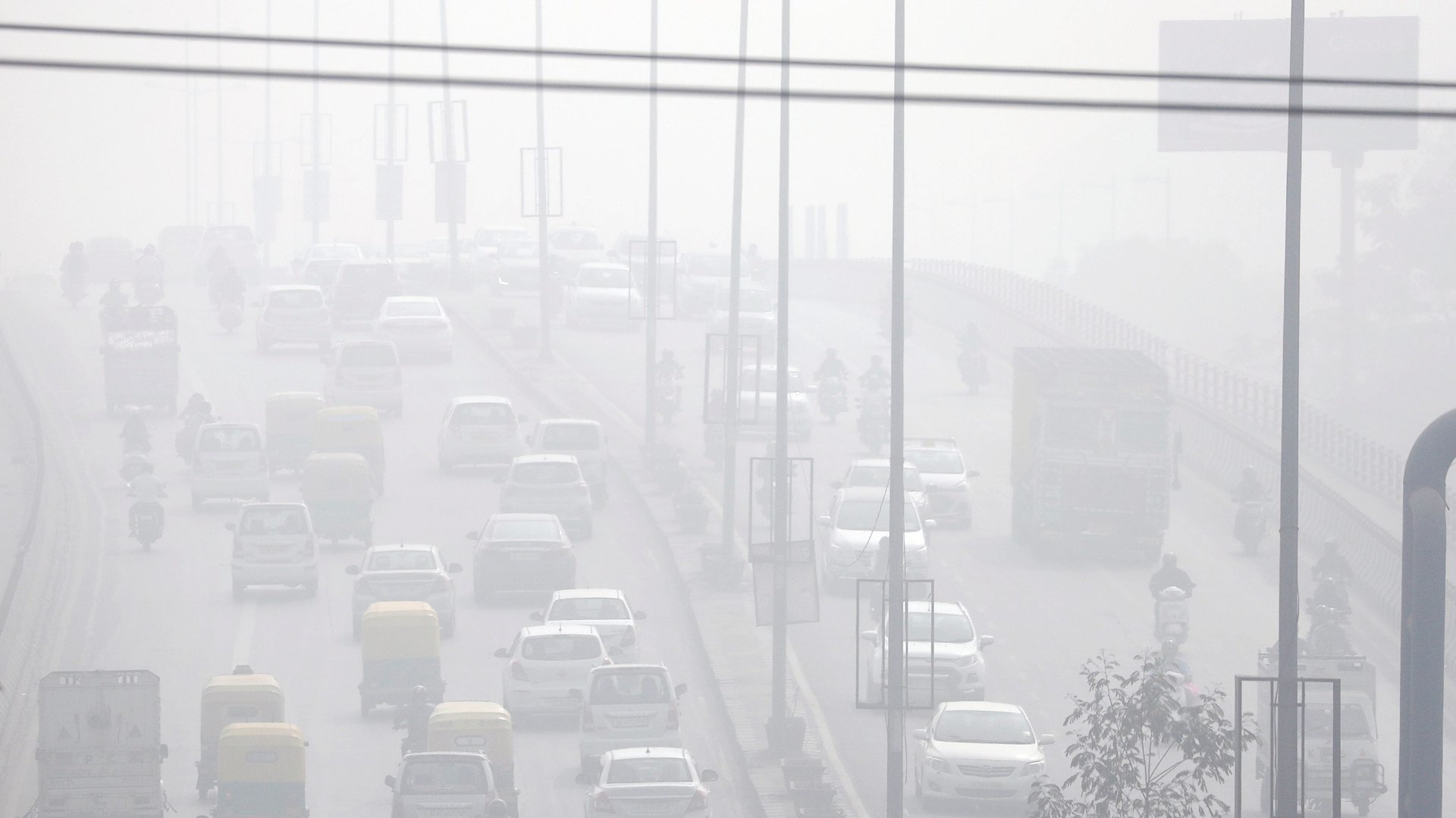Remote work is a huge opportunity for high-impact climate policy
Amid the immense hardship of the Covid-19 pandemic, one unexpected bright spot has emerged: residents from Los Angeles to New Delhi are reporting unprecedented smog-free skies—the result of a drastic reduction in vehicle-based and industrial air pollution.


Amid the immense hardship of the Covid-19 pandemic, one unexpected bright spot has emerged: residents from Los Angeles to New Delhi are reporting unprecedented smog-free skies—the result of a drastic reduction in vehicle-based and industrial air pollution.
The vanishing of the daily commute has brought to light the burden of cars and trucks on health and the environment. As an intentional effort to reduce greenhouse gas emissions, at low cost to society, policymakers and businesses should continue to encourage working from home for jobs that allow it, even after the coronavirus crisis has receded.
We now know remote-work policies can be more broadly applied than previously thought. Maintaining them would provide meaningful air-pollution, health, and well-being benefits to employees and communities, and business benefits through the talent-retention power of remote work and improved environmental performance.
The experience of the past month has shown the sheer magnitude of pollution generated by everyday life. Satellite data shows an astounding reduction in nitrogen dioxide—a pollutant primarily generated by cars and trucks that aggravates respiratory diseases—in the northeastern United States, for example, as state and local governments have adopted prudent stay-at-home measures.
Along with the reduction in nitrogen dioxide in the US, as well as in Europe and China, analysts are predicting an unprecedented reduction in associated greenhouse gas emissions. The US government predicts a 7.5% reduction in energy-related carbon dioxide emissions, for example, as gasoline sales have crumbled by half despite record-low oil prices.
Of course, this is no time to rejoice. Many of these air-pollution improvements have come at an enormous cost to society: businesses are closed, and millions of jobs have been lost. But once business returns to normal, lessons from the pandemic can help spur innovative policies to reduce transportation emissions.
The emissions impact of millions of people not commuting by car every day are enormous
No single activity contributes more greenhouse gas emissions than driving to and from work. Transportation is the number one source of emissions in the United States, and light-duty vehicles contribute the lion’s share of all carbon emissions. The most common mile traveled by households operating light-duty vehicles is the one to and from work.
Working from home can contribute to the difficult task of reducing emissions from the transportation sector. Although carbon emissions from electricity have declined over the past decade, transportation reductions have been far more elusive. Electric vehicles provide great promise; however, it will be years before they reach cost parity with internal-combustion equivalents. Battery-based vehicles of all forms accounted for only 5% of the American new car market in 2018. And new vehicle sales cannot change the greenhouse gas emissions from the existing fleet of vehicles, of which only 7% are replaced every year.
Because so many occupations in the United States are information-based, nearly 37% of all jobs can now be accomplished remotely. Incentivizing these employees to work from home just two or three days a week will reduce their typical commute-based greenhouse gas emissions by half, immediately. This expeditious reduction in emissions would help immensely while the window to avoid catastrophic climate effects narrows. Research from the Intergovernmental Panel on Climate Change shows that limiting global warming to only 1.5°C likely requires a rapid reduction of carbon dioxide of 45% by 2030.
Moreover, the benefits extend beyond reduced air pollution; working from home cuts frustrating and often unhealthy commutes, lessens traffic congestion, and reduces fatal traffic accidents . Work-from-home policies are also likely to help attract and retain talent. According to pre-pandemic surveys, up to 80% of US workers were interested in teleworking at least part-time, with two to three days a week being the sweet spot for balancing reduced commutes and collaborative work in an office.
There are also costs from working from home too much, such as loneliness and less peer-to-peer interaction. But a commonsense policy does not need to be all or nothing; we can use this time of profound social disruption to assess whether the benefits of not commuting everyday exceed the costs.
What could work-from-home climate policy look like?
First, policy makers should consider tax breaks to companies that support employees working from home at least part of the time. The benefit should be proportionate to carbon emissions avoided, with credible third parties tasked with verifying emissions reductions. This could be coupled with broad-based policies to support high-speed internet connections, and legislative reforms similar to the federal Telework Enhancement Act of 2010.
Second, policies encouraging or requiring eligible employees to work from home, either full-time or part-time, can be a meaningful part of corporate emissions-reductions goals, which are increasingly relevant to consumers and investors alike. Businesses also should encourage employees to walk, bike, or take public transportation on days they do come into the office, by reimbursing related expenses.
While Covid-19 has upended everyday life and caused significant hardship, it also presents an opportunity to analyze and craft new ways of doing things. For many businesses, teleworking infrastructure is now in place, making it simple to continue in some form post-pandemic. If policy catches up to this and enshrines it, the world will have a promising and efficient way to address climate change and improve people’s lives.
Matt Butner is an economic fellow and PhD economist at the Institute for Policy Integrity at the NYU School of Law, where he works on electricity and transportation policy.
Jayni Hein is the natural resources director at the Institute for Policy Integrity at the NYU School of Law, where she serves as an adjunct professor.